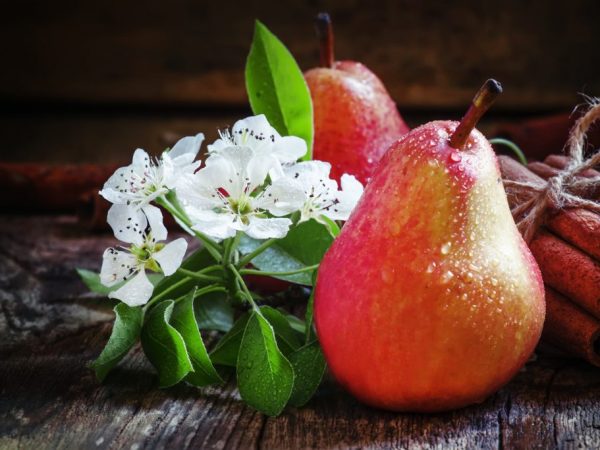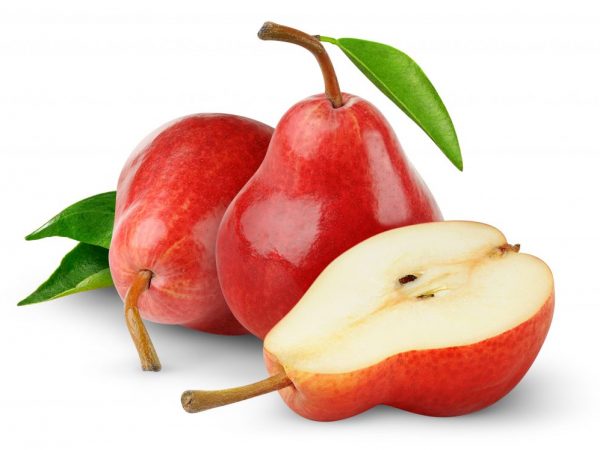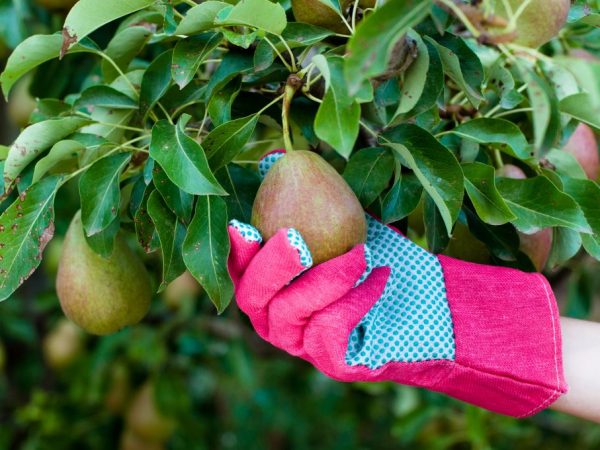Characteristics of Nika pears
Pear Nika is the result of crossing the Talgar beauty and the Daughter of Dawn.

Characteristics of Nika pears
Characteristics of the variety
The Nika pear variety was bred by Moscow scientists specifically for the regions of central Russia.
The variety is frost-resistant. Up to -38⁰ C, the plant is able to maintain its viability. Fruit collection in most regions begins at the end of September and, under favorable conditions, lasts until mid-autumn.
Other characteristics of the species:
- high productivity;
- disease resistance;
- good keeping quality of fruits.
For the correct formation of ovaries and a stable yield, Nika needs pollinating pears. Late varieties will become good neighbors for her.
Description of the tree
Description of Nick's pear variety shows that the tree is short and compact.
The maximum plant height is 3 m. The crown shape is spherical. The branches are located at a considerable distance from the trunk, as well as from each other. The main shoots are massive, but short, and the additional ones are thin and long, departing from the main ones at a large angle.
The average age at which the plant enters the fruiting phase is 5 years. With proper care and sufficient soil fertility, the first fruits can be obtained as early as 3 years.
The seedling should have a height of about 1 meter, a well-developed root system and at least two vertically growing branches with stepsons on them. The optimal age of a specimen suitable for planting in a permanent place is 2 years.
Description of the fetus
The pears have the correct shape. The size of the fruit depends on the age of the seedling.
Fruit weight ranges from 130 to 200 g. The color of pears is red. Color saturation may vary depending on time and storage conditions.

Red fruits, creamy flesh
The inside of the fruit has a creamy hue. The consumer ripeness of the fruits occurs in about two months, and they can be stored for a total of up to 5 months after harvest. The skin is quite dense on the outside, but it is practically not felt when consumed.
The fruit is fragrant. They have a pleasant, sweet and sour taste without pronounced astringency and with a slight aftertaste of nutmeg. The pulp on the cuts has a fine-grained structure, but when consumed, this is not felt at all. In terms of juiciness, Nick resembles early pears.
Fruit application
The fruits of this variety can be used in cooking and for the production of:
- preserves, marmalades, marmalade and jam;
- juices and compotes;
- fillings and mashed potatoes.
The juiciness of the fruit is also noted by winemakers. But the fruit is best consumed fresh, because it contains a large amount of vitamins. The fruits are stored for a long time in cellars and do not lose their juiciness and attractiveness during maturation.
Landing
Nick's pear planting is carried out both in autumn and spring. If you provide the seedling with everything you need, then after 3-4 years you can enjoy the first fruits.
Basic landing rules:
- Pits should be prepared in advance. If planting is planned in the spring, then the place must be prepared in the fall.
- The depth of the pit must be at least 1 m, mineral fertilizers must be added to it. It is best if it is compost, rotted cow dung or bird droppings, as well as wood ash.
- The landing site must be chosen in a well-lit area. Better if it is located on a hill.
- Next to Nika, you must definitely plant another copy of any winter variety. This will make it possible to increase the number of ovaries and improve the quality of the crop.
Planting the plant should be done in dry and warm weather. Be sure to water the plant and tamp the soil around it. It is important to make sure that the neck of the seedling is not deepened, as this can cause rotting of the tree.
Care
The main care of a fruit plant is crown pruning and soil irrigation. Branches are formed annually. During cropping, it is imperative to remove all dry and diseased shoots, and also shorten the remaining branches by at least 10 cm.If you neglect the pruning process or carry it out incorrectly, you can harm the plant. This will negatively affect its yield and fruit quality.
If during the period of bud formation there is a drought or the thermometer reaches high marks for this time of year, the seedling will need to be watered. During the dry months of summer, Nika also needs extra moisture.
Mineral fertilizers need to be applied three years after rooting. A passive fertilizer can be mulch, which is used to cover the soil around the tree trunk.

The main care of a fruit plant is pruning the crown and irrigating the soil.
With the onset of cold weather in the northern part of the middle lane, the trunk must be insulated. In young plants, the lower branches of the tree are also wrapped. The best material is agrofiber. Foliage insulation is also allowed.
Pests and diseases
Nika is resistant to pests and the most common diseases: entomosporium and clasterosporium. Scab is not scary to her either. Despite the strong immunity, it is still necessary to carry out preventive treatment of plants from pests. You can do with timely cleaning of the foliage, as well as whitewashing the trunks.
Processing
The basic pest control process is fairly straightforward. It consists in spraying special solutions of the crown and trunk of the plant. Spraying with pesticides should be done exclusively in dry and calm weather. It is recommended to do this twice a season:
- in the fall, after the fruits are harvested, and the plant will shed its foliage;
- in the spring until the flowers bloom or on the first day of flowering.
A prerequisite for high-quality pest control is compliance with the concentration of the solution and its consumption rates. It is important to use certified drugs. Better if they have a wide range of activities.
Conclusion
Nick's undersized pear tree is the best choice for those looking to decorate their plot. The variety is characterized by good palatability, high yield, frost resistance and excellent immunity.


